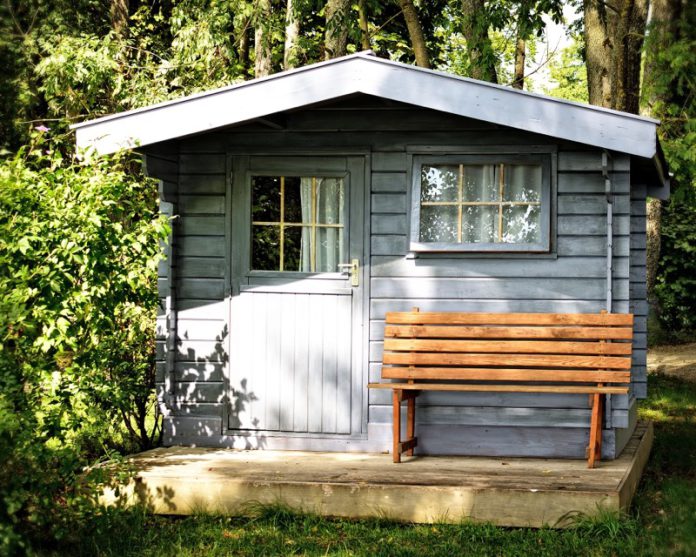As the temperatures drop this winter, it’s essential to ensure your shed is climate controlled. Having a climate-controlled shed can help protect items stored inside and make the environment more comfortable when you’re in there. But how can you make sure your shed is climate controlled? This blog post will discuss five ways to make your shed climate controlled this winter. Read on to learn more!
Use a space heater
Space heaters are a great way to make your shed climate controlled this winter. Not only do they provide direct heat, but they also help to circulate the air, making it easier for your shed to maintain a comfortable temperature. When using a space heater in your shed, use a thermostat designed for the space you’re using it. Additionally, ensure the heater is kept from combustible materials and monitored closely to ensure safe operation. Lastly, if you are using an extension cord, be sure to check that the cord is rated for the load of the heater.
Insulate your shed
Insulating your shed is one of the most effective ways to make it climate controlled. It prevents the transfer of heat and helps keep temperatures consistent. Additionally, it will also help to reduce noise levels inside the shed. You’ll need to purchase insulation material, such as fiberglass, rigid foam board, or spray foam, to insulate your shed. Measure the walls and determine how much insulation you’ll need. Then cut the material to size and secure it to the walls using adhesive, staples, or nails. You can also add a layer of insulation on the floor and ceiling if desired.
Finally, you can cover the insulation with vapor barrier sheeting to prevent condensation. This will also help make your shed more airtight, increasing its climate control capabilities.
In conclusion, insulating your shed is an easy and cost-effective way to make it climate controlled this winter. With suitable materials and proper installation techniques, you’ll be able to enjoy a warm and cozy shed all season long!
Install weather stripping
Weather stripping is a great way to ensure that any storage sheds by Keter are climate controlled this winter. It helps keep out drafts, as well as wind and rain. Weatherstripping is a foam, vinyl, or metal strip that you can apply around door and window frames. It creates an airtight seal that prevents air from entering the shed. When installing weather stripping, it’s essential to measure the frames and cut the weather stripping accordingly. Once you’ve cut the weather stripping, you can use nails or adhesive to attach it to the frames. Make sure you use the appropriate adhesive for the material you are using (for example, if you are using vinyl, use a vinyl adhesive).
Inspecting your weather stripping periodically is also essential to ensure it is still functioning properly. If you notice any gaps in the weather stripping or if it is coming loose, you may need to re-attach it or replace it altogether. Weatherstripping is an effective and inexpensive way to help control your shed climate this winter. It helps keep out drafts and can prevent moisture and condensation from entering your shed, which can help protect your stored items and equipment.
Use a dehumidifier
A dehumidifier is an excellent choice if you’re looking for a permanent solution to control your shed climate. Dehumidifiers are an effective way to maintain a comfortable temperature in your shed. They extract moisture from the air, which helps reduce the temperature inside your shed and keeps it comfortable. When selecting a dehumidifier, you should consider the room size that needs to be cooled. For larger sheds, consider buying a commercial-grade dehumidifier. These typically come with humidity and temperature control, automatic shut-off, and more. When setting up your dehumidifier, you’ll want to place it near the highest point in the room so that it can effectively remove moisture from the air.
Be sure to keep an eye on your dehumidifier’s filter as well. It will need to be changed every so often to ensure it is running properly. Lastly, remember to empty the water tank when it gets full. This will help your dehumidifier run efficiently and prevent mold and mildew from forming in your shed.
Seal any cracks or gaps
Cracks and gaps can easily let in the cold winter air, so you’ll want to seal them up if you’re trying to make your shed climate controlled. Start by inspecting your shed for cracks or gaps, including around windows and doors. Sealant is relatively inexpensive and easy to find at your local hardware store. When applying the sealant, follow all directions on the package and use a putty knife or scraper to get a smooth finish. Once you’ve sealed all cracks and gaps, you can rest assured that your shed is fully protected against cold weather.
A climate-controlled shed is essential for anyone looking to keep their belongings safe and protected in the winter. Using a space heater, insulating your shed, installing weather stripping, using a dehumidifier, and sealing any cracks or gaps, you can ensure that your shed remains warm and cozy throughout the cold season. With these tips in mind, you’ll be able to make sure your shed stays comfortable even during the harshest winter weather.




